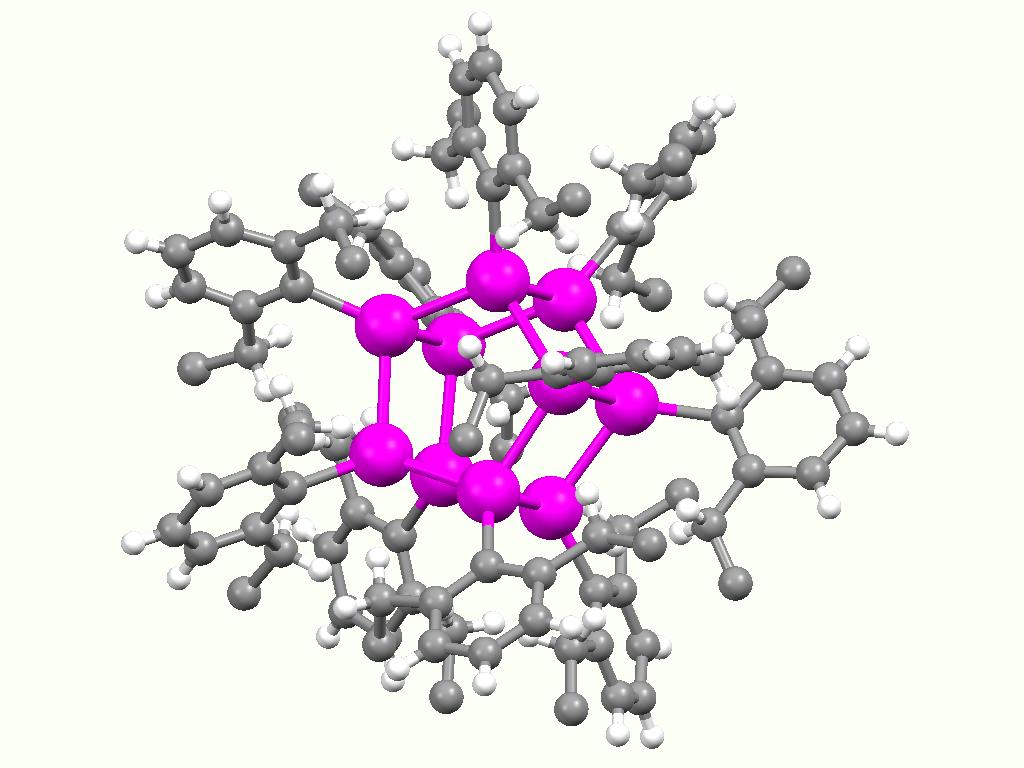|
Triphenyltin
Triphenyltin compounds are organotin compounds with the general formula (C6H5)3SnX. They contain the triphenyltin group, (C6H5)3Sn, or Ph3Sn, which consists of an atom of tin bonded to three phenyl groups. Examples of triphenyltins include: * Triphenyltin hydride, Ph3SnH * Triphenyltin hydroxide, Ph3SnOH * Triphenyltin chloride, Ph3SnCl *Triphenyltin acetate, Ph3SnOAc Triphenyltin compounds have been used extensively as algicides and molluscicides in antifouling products since the 1960s, together with tributyltin compounds, and both these classes of compounds are of local (but not global) environmental concern because they are persistent organic pollutants. They are also used in organic synthesis to generate radicals Radical may refer to: Politics and ideology Politics *Radical politics, the political intent of fundamental societal change * Radicalism (historical), the Radical Movement that began in late 18th century Britain and spread to continental Europe an ... or cleave ca ... [...More Info...] [...Related Items...] OR: [Wikipedia] [Google] [Baidu] |
Triphenyltin Hydroxide
Triphenyltin hydroxide is an organotin compound with formula Sn(C6H5)3OH. Triphenyltin hydroxide is used as a fungicide for potatoes, sugar beets, and pecans. It was first registered for use as a pesticide Pesticides are substances that are meant to control pests. This includes herbicide, insecticide, nematicide, molluscicide, piscicide, avicide, rodenticide, bactericide, insect repellent, animal repellent, microbicide, fungicide, and lampri ... in the United States in 1971. Structure While triphenyltin hydroxide is often depicted as a monomer, it crystallizes as a polymer with a bridging hydroxide groups. The Sn-O distances are 2.18 and 2.250 Å. Many organotin compounds engage in similar aggregation equilibria. References Triphenyltin compounds Fungicides {{organic-compound-stub ... [...More Info...] [...Related Items...] OR: [Wikipedia] [Google] [Baidu] |
Triphenyltin Hydride
Triphenyltin hydride is the organotin compound with the formula (C6H5)3SnH. It is a white distillable oil that is soluble in organic solvents. It is often used as a source of "H·" to generate radicals or cleave carbon-oxygen bonds. Preparation and reactions Ph3SnH, as it is more commonly abbreviated, is prepared by treatment of triphenyltin chloride with lithium aluminium hydride.Clive, D. L. J. "Triphenylstannane" in Encyclopedia of Reagents for Organic Synthesis (Ed: L. Paquette) 2004, J. Wiley & Sons, New York. Although Ph3SnH is treated as a source of "H·", in fact it does not release free hydrogen atom A hydrogen atom is an atom of the chemical element hydrogen. The electrically neutral atom contains a single positively charged proton and a single negatively charged electron bound to the nucleus by the Coulomb force. Atomic hydrogen consti ...s, which are extremely reactive species. Instead, Ph3SnH transfers H to substrates usually via a radical chain mechan ... [...More Info...] [...Related Items...] OR: [Wikipedia] [Google] [Baidu] |
Fentin Acetate
Fentin acetate is an organotin compound Organotin compounds or stannanes are chemical compounds based on tin with hydrocarbon substituents. Organotin chemistry is part of the wider field of organometallic chemistry. The first organotin compound was diethyltin diiodide (), discovered ... with the formula (C6H5)3SnO2CCH3. It is a colourless solid that was previously used as a fungicide. Structure Most carboxylates of triphenyltin adopt polymeric structures with five-coordinate Sn centers. References External links *{{PPDB, 311 Acetate esters Obsolete pesticides Fungicides Triphenyltin compounds ... [...More Info...] [...Related Items...] OR: [Wikipedia] [Google] [Baidu] |
Triphenyltin Compounds
Triphenyltin compounds are organotin compounds with the general formula (C6H5)3SnX. They contain the triphenyltin group, (C6H5)3Sn, or Ph3Sn, which consists of an atom of tin bonded to three phenyl groups. Examples of triphenyltins include: * Triphenyltin hydride, Ph3SnH * Triphenyltin hydroxide, Ph3SnOH * Triphenyltin chloride, Ph3SnCl *Triphenyltin acetate, Ph3SnOAc Triphenyltin compounds have been used extensively as algicides and molluscicides in antifouling products since the 1960s, together with tributyltin compounds, and both these classes of compounds are of local (but not global) environmental concern because they are persistent organic pollutants. They are also used in organic synthesis Organic synthesis is a special branch of chemical synthesis and is concerned with the intentional construction of organic compounds. Organic molecules are often more complex than inorganic compounds, and their synthesis has developed into one o ... to generate radicals or cleave c ... [...More Info...] [...Related Items...] OR: [Wikipedia] [Google] [Baidu] |
Tributyltin Compounds
Tributyltin (TBT) is an umbrella term for a class of organotin compounds which contain the (C4H9)3 Sn group, with a prominent example being tributyltin oxide. For 40 years TBT was used as a biocide in anti-fouling paint, commonly known as bottom paint, applied to the hulls of oceangoing vessels. Bottom paint improves ship performance and durability as it reduces the rate of biofouling, the growth of organisms on the ship's hull. The TBT slowly leaches out into the marine environment where it is highly toxic toward nontarget organisms. TBT toxicity can lead to biomagnification or bioaccumulation within such nontarget organisms like invertebrates, vertebrates, and a variety of mammals. TBT is also an obesogen. After it led to collapse of local populations of organisms, TBT was banned. Chemical properties TBT, or tributyltin, tributylstannyl or tributyl stannic hydride compounds are organotin compounds. They have three butyl groups covalently bonded to a tin(IV) centre.Davies, Alwy ... [...More Info...] [...Related Items...] OR: [Wikipedia] [Google] [Baidu] |
Organotin Chemistry
Organotin compounds or stannanes are chemical compounds based on tin with hydrocarbon substituents. Organotin chemistry is part of the wider field of organometallic chemistry. The first organotin compound was diethyltin diiodide (), discovered by Edward Frankland in 1849. The area grew rapidly in the 1900s, especially after the discovery of the Grignard reagents, which are useful for producing Sn–C bonds. The area remains rich with many applications in industry and continuing activity in the research laboratory. Structure Organotin compounds are generally classified according to their oxidation states. Tin(IV) compounds are much more common and more useful. Organic derivatives of tin(IV) The tetraorgano derivatives are invariably tetrahedral. Compounds of the type SnRR'R''R have been resolved into individual enantiomers. Organotin halides Organotin chlorides have the formula for values of ''n'' up to 3. Bromides, iodides, and fluorides are also known but less important. T ... [...More Info...] [...Related Items...] OR: [Wikipedia] [Google] [Baidu] |
Bond Cleavage
In chemistry, bond cleavage, or bond fission, is the splitting of chemical bonds. This can be generally referred to as dissociation when a molecule is cleaved into two or more fragments. In general, there are two classifications for bond cleavage: ''homo''lytic and ''hetero''lytic, depending on the nature of the process. The triplet and singlet excitation energies of a sigma bond can be used to determine if a bond will follow the homolytic or heterolytic pathway. A metal−metal sigma bond is an exception because the bond's excitation energy is extremely high, thus cannot be used for observation purposes. In some cases, bond cleavage requires catalysts. Due to the high bond-dissociation energy of C-H bonds, around , a large amount of energy is required to cleave the hydrogen atom from the carbon and bond a different atom to the carbon. Homolytic cleavage In homolytic cleavage, or homolysis, the two electrons in a cleaved covalent bond are divided equally betwee ... [...More Info...] [...Related Items...] OR: [Wikipedia] [Google] [Baidu] |
Pesticides
Pesticides are substances that are meant to pest control, control pest (organism), pests. This includes herbicide, insecticide, nematicide, molluscicide, piscicide, avicide, rodenticide, bactericide, insect repellent, animal repellent, microbicide, fungicide, and lampricide. The most common of these are herbicides which account for approximately 80% of all pesticide use. Most pesticides are intended to serve as plant protection products (also known as crop protection products), which in general, protect plants from weeds, fungi, or insects. As an example, the fungus ''Alternaria solani'' is used to combat the aquatic weed ''Salvinia''. In general, a pesticide is a chemical (such as carbamate) or biological agent (such as a virus, bacterium, or entomopathogenic fungus, fungus) that deters, incapacitates, kills, or otherwise discourages pests. Target pests can include insects, plant pathogens, weeds, mollusca, molluscs, birds, mammals, fish, nematodes (roundworms), and microbes ... [...More Info...] [...Related Items...] OR: [Wikipedia] [Google] [Baidu] |
John Wiley & Sons
John Wiley & Sons, Inc., commonly known as Wiley (), is an American multinational publishing company founded in 1807 that focuses on academic publishing and instructional materials. The company produces books, journals, and encyclopedias, in print and electronically, as well as online products and services, training materials, and educational materials for undergraduate, graduate, and continuing education students. History The company was established in 1807 when Charles Wiley opened a print shop in Manhattan. The company was the publisher of 19th century American literary figures like James Fenimore Cooper, Washington Irving, Herman Melville, and Edgar Allan Poe, as well as of legal, religious, and other non-fiction titles. The firm took its current name in 1865. Wiley later shifted its focus to scientific, technical, and engineering subject areas, abandoning its literary interests. Wiley's son John (born in Flatbush, New York, October 4, 1808; died in East Orange, ... [...More Info...] [...Related Items...] OR: [Wikipedia] [Google] [Baidu] |
Encyclopedia Of Reagents For Organic Synthesis
The ''Encyclopedia of Reagents for Organic Synthesis'' is published in print and online by John Wiley & Sons Ltd. The online version is also known as e-EROS. The encyclopedia contains a description of the use of reagents used in organic chemistry. The eight-volume print version includes 3500 alphabetically arranged articles and the online version is regularly updated to include new reagents and catalyst Catalysis () is the process of increasing the rate of a chemical reaction by adding a substance known as a catalyst (). Catalysts are not consumed in the reaction and remain unchanged after it. If the reaction is rapid and the catalyst recyc ...s. References External links *Print version Encyclopedias of science Chemistry books {{encyclopedia-stub ... [...More Info...] [...Related Items...] OR: [Wikipedia] [Google] [Baidu] |
Environment Agency
The Environment Agency (EA) is a non-departmental public body, established in 1996 and sponsored by the United Kingdom government's Department for Environment, Food and Rural Affairs, with responsibilities relating to the protection and enhancement of the environment in England (and until 2013 also Wales). Based in Bristol, the Environment Agency is responsible for flood management, regulating land and water pollution, and conservation. Roles and responsibilities Purpose The Environment Agency's stated purpose is, "to protect or enhance the environment, taken as a whole" so as to promote "the objective of achieving sustainable development" (taken from the Environment Act 1995, section 4). Protection of the environment relates to threats such as flood and pollution. The vision of the agency is of "a rich, healthy and diverse environment for present and future generations". Scope The Environment Agency's remit covers almost the whole of England, about 13 million&n ... [...More Info...] [...Related Items...] OR: [Wikipedia] [Google] [Baidu] |



